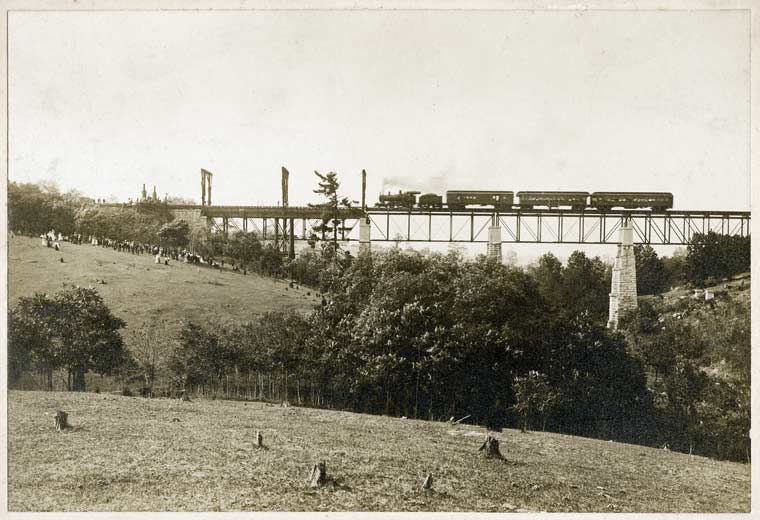cost per yard

A hand written note on the back of the photograph identifies this as the bridge-span over the Rivanna River at the foot of Monticello (.42 miles east of the Mill, .47 miles north of the House). It's a safe assumption that this was a gathering celebrating the official opening of the span, there are over 100 people in attendance, men women and children. The Central Virginia rail line came to Charlottesville in 1850, but the photographic technology plus the presence of what look to be masonry piers from a previous structure argue for a later date for this photo, c. 1905. Please contact us if you can provide an exact date.--emory@historicwoolenmills.org
The cost of marketing was negligible. Advertising and commission fees consumed most of that expenditure. Advertising amounted to a very small sum, varying from $433 in 1875 to one-tenth that amount in 1881. Nor were commissions excessive. For example in 1880, when gross sales totaled $128,000, salesmen received only $6,400 or five percent of the income. During the following year this expense amounted to only $3,500, or about two percent of total sales.
The general cost structure can be roughly analyzed from scattered figures. Raw materials unquestionably dominated the picture; probably one-half the cost was to be found there. Next in importance, "hand labor" accounted for about twenty percent and salaries for another two percent. In 1873, before the crash, the expenses of actual manufacturing operations stood at twenty cents per yard. In the hope of cutting this figure by four cents, Marchant added two broad looms to the eleven narrow ones in use. By 1881, however, costs of manufacturing were varying between thirty and forty cents per yard, primarily because of producing a better grade of cloth.--Harry Poindexter
Labels: Poindexter History, railroad

0 Comments:
Post a Comment
<< Home